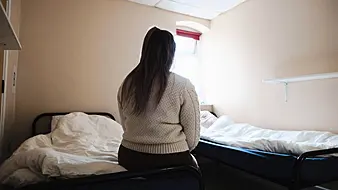Mary O’Brien Browne lives in the picturesque village of Fenit, Co Kerry. Rural living can often mean a dependence on car usage; as an endoscopy nurse, her work takes her to the Bons Secours hospital in Tralee, a necessary 20-minute trip each way by car.
On her days off, however, the car may sit idle in the driveway, as cycling and walking - made easier by the opening of the local greenway in mid-2022 - are par for the course.
The family are unintentional poster children for sustainable transport. Her older daughter Saoirse was a keen cyclist and now takes the school bus to secondary school, but her sons Thomas (10) and Diarmuid (9) attend the local St Brendan’s National School, cycling their local greenway every day to get to and from school.
The five-minute cycle takes place “hail, rain or snow”, O’Brien Browne laughs.
“They look forward to the cycle, we never have to coax them. We are quite fortunate, our children have always cycled to school. They have grown up around cycling, they know no other way, so it was an easy transition. Our children would almost never go to school by car and I appreciate that not every child in Ireland has that luxury and it is a luxury.”

There will be 350km of national or regional greenway routes, funded by the Department of Transport by this year, with €360 million being spent annually on walking and cycling routes, with €60m invested in greenways.
While the family always cycled, the opening of the spectacular Fenit to Tralee greenway last year made it “a no-brainer”, O’Brien Browne says.
“The greenway has opened up the opportunity for people to cycle that would never have had the chance to cycle, it’s just made it so much more accessible.
"It’s much safer now, because the main road was always very busy. We can cycle out our door, take a right and be on the beginning of the greenway, which starts at Fenit. Five minutes later you are at the school.”

The benefits of the morning and afternoon cycle are multifold. “The kids wake up on the cycle, whereas kids in the car don’t get that chance,” O’Brien Browne says.
“Their muscles are moving and their bodies are waking up. In the autumn they are blackberry picking as they are coming back from school or I am pointing out migratory birds that have come here for the winter. They see the changes in nature with their own eyes rather than reading about it in school. They are already learning just by being on the bike.”
It also gets O’Brien Browne moving on her days off - she might cycle alongside the boys, or else take the opportunity to go for a walk, letting them cycle ahead. It’s a very sociable commute, she says.
“It means I get out in the fresh air in the morning as well, and I love it because you meet your neighbours and have a chat, or they will meet their friends on their way to school too. In summer, they can walk from the school, go down the greenway, onto the beach and go for a swim. The boys are always on the greenway.”

During the summer, O’Brien Browne and her fisherman husband Alan operate a boat tour known as the Tralee Bay Experience.
The greenway has made the whole experience seamless for tourists to the town, she explains. “With the greenway you are cycling literally out into Tralee Bay, it’s amazing. You can cycle off the greenway to the pier and in five minutes you’re at the lighthouse.”
Cycling was always a way of life for Fenit residents, however, long before the greenway opened.
The annual Coastal Cycle has taken place every spring for the past 11 years, with a view to raising funds for the local national school.
“This is a big event in the village calendar every year and was the main incentive that got everyone cycling,” O’Brien Browne explains. “If children watch people cycling every day, they essentially just grow up with it and it is just the natural step for them to begin cycling to school.”

While she acknowledges the positive environmental impact of avoiding using the car for the school run, O’Brien Browne says these benefits extend far beyond the obvious reduction in carbon emissions.
“It’s about far more than just your carbon footprint, it’s about knowing where you are from,” she says.
“You won’t hear the birds or smell the air if you are in the car. You want future generations to know how important the bay is, because if we don’t pass that knowledge on then it will be ruined.”
Your Journey Counts. Bike it, walk it, bus it, train it. Help reduce Ireland’s transport emissions. For more information on why your journey counts, visit www.gov.ie/YourJourneyCounts








